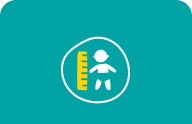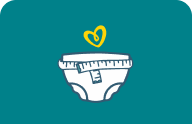Moro Reflex in Babies: What It is and How to Manage It
If you've ever seen your baby suddenly fling their arms wide or experienced the newborn startle reflex in sleep, you've witnessed the Moro reflex . This natural response is a fascinating part of newborn development, but it can sometimes surprise or worry parents. In this article, we'll explore what triggers this reflex, what it means for your baby, and simple ways to help them feel secure and calm.
What Is the Moro Reflex?
The Moro reflex, often referred to as the "startle" reflex, is an automatic response seen in newborns and infants. But what is the Moro reflex, and why does it happen? This involuntary action is a natural part of early development and occurs when your baby's nervous system reacts to unexpected changes.
When triggered, your baby might suddenly fling their arms outward with flexed hands, extend their legs, stretch their neck, and quickly bring their arms back together—sometimes crying afterward. If you’re wondering why newborns startle, it’s often because of:
Sudden shifts in their head position
The head unexpectedly falls backward
Sudden, startling stimuli like loud noises
Disruptions to their balance caused by abrupt movements.
It’s important to note that it’s a sign of a healthy, developing nervous system. However, for premature babies, this reflex may appear weaker at first.
How to Identify the Moro Reflex?
Your little one’s healthcare provider will typically check for the Moro reflex shortly after birth and during routine well-child visits. But how do they test the Moro reflex? Here’s what happens:
While your baby is lying face-up on a soft, padded surface, the provider will gently lift their head before quickly releasing it, supporting it as it falls backward momentarily. In response, your child may look startled, raise their arms above their head, fling them outward, and cry briefly before drawing their arms back in and relaxing.
Experiencing the baby startle reflex while sleeping is also common and may cause sudden jerking movements during rest. Some babies even lift their legs up while sleeping as part of this reflex, which is normal and temporary.
If the response is unusual—such as overly exaggerated movements, asymmetry (when one arm reacts differently from the other), or lack of a startle reaction—this could be a sign of an underlying issue. In rare cases, these may include symptoms of a retained Moro reflex or other developmental concerns. Your baby's healthcare provider may recommend further tests to better understand the cause.
How to Calm Your Baby's Moro Reflex?
It's common for babies to startle themselves awake due to the baby startle reflex while sleeping. To help prevent this, you may try swaddling your baby at bedtime. Swaddling involves wrapping your baby snugly in a swaddle blanket, much like a burrito, to provide a sense of security and limit sudden arm movements.
Check out this step-by-step guide to learn how to swaddle your baby safely and effectively. Swaddling may help your baby sleep more soundly by reducing the likelihood of being startled awake.
When Does the Moro Reflex Stop?
The Moro reflex normally appears within the first few weeks of your baby's life and peaks around the first month. By the time this reflex fades, your baby's movements will gradually become more intentional and controlled. If you're wondering "When does the startle reflex go away? ", remember that each baby develops at their own pace, but most babies begin to lose it after 2 months of age as their nervous system matures.
When to Contact Your Child’s Healthcare Provider?
The Moro reflex is a natural part of infant development, but there are specific instances when consulting your child’s healthcare provider is important:
If the reflex is overly exaggerated or asymmetrical, such as one arm reacting differently than the other, it could signal potential neurological or muscular issues.
If the reflex is absent entirely, this could point to complications requiring further evaluation.
These scenarios may indicate symptoms of a retained Moro reflex or other conditions that might need attention. Your healthcare provider may perform additional assessments and recommend appropriate next steps if needed.
Remember, every baby develops differently, and it’s always better to consult a professional if you have concerns.
The Bottom Line
The Moro reflex is a natural startle response that begins in your baby’s first weeks and typically fades by around 2 months of age. It may occasionally disrupt sleep, but swaddling may help keep your baby calm and secure.
If the reflex persists past 4 months, consult your healthcare provider, as it may signal a developmental concern. Remember, every baby develops at their own pace.
For more support as you care for your baby, download the free Pampers Club app to enjoy helpful discounts and digital offers on essentials.
How we wrote this article The information in this article is based on the expert advice found in trusted medical and government sources, such as the American Academy of Pediatrics and the American College of Obstetricians and Gynecologists. You can find a full list of sources used for this article below. The content on this page should not replace professional medical advice. Always consult medical professionals for full diagnosis and treatment.
Join a World of Support
through Pregnancy and Parenthood.
TRACK WITH TOOLS
LEARN WITH EXPERTS
GET REWARDED












